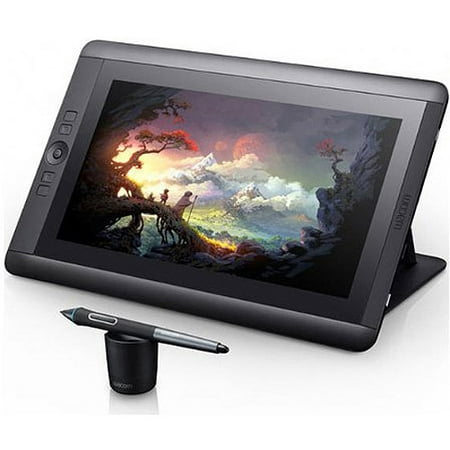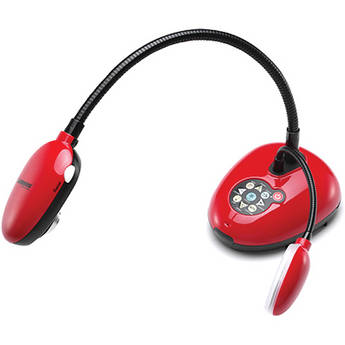Resources: Technology Hardware
Hardware:
Something to write on: Tablets, PCs, monitors, etc...
When using a tablet PC, the tablet needs to serve three purposes simultaneously:
- Run whatever application you want to demonstrate. If you want to demonstrate a specific software, for example (Matlab, engineering design software, etc.) the PC or Tablet needs to be powerful enough to run that software, or to allow you to link to virtual machines running that software. If you can't see it on the screen, you can't demonstrate it in a video lecture.
- Run whatever application you want to 'write' on. I like to write on power point, because the shape of a slide fits the shape of a computer viewing screen so nicely. And, it is a lot like a chalk/whiteboard, so it still 'feels' to me like writing on the board. I suppose in few years, that won't matter at all...Other options are Word, OneNote, Paint, Photoshop, Bamboo Paper, and other drawing applications, etc.
- Run the screen capture software. See the Software Technology Page.
Something to write with: Stylus options
Tablet PCs and true tablets already come with a stylus. You want a stylus that writes with a thin line so you can write similar to writing on paper. The Tablet needs to be able to 'keep up' with your writing.
Tablet /Tablet PC options include: (Dr. Furse currently uses a Surface Pro tablet)
Microsoft Surface Pro 4
Links to an external site.
Fast processor and a nice-sized stylus.
Very lightweight and compact. Doesn't run as fast as the Surface Pro, but doesn't carry the same price tag either.
Lenovo ThinkPad Yoga Links to an external site.
This laptop is fast and performs great using screen annotations. The stylus is a bit small, about half the size of normal pen or pencil.
Cintiq Companion 2 Tablet Links to an external site.
The Cintiq Companion 2 runs Windows 10, is lightweight, and has a great stylus. It is a bit pricey as most Wacom products are.

For the iPad:
Air Display
iPad using Air Display - (Your iPad becomes a second monitor)
The iPad and other 'capacitive touchscreen' tablets are limited in this fashion, so buy an external stylus with the thinnest possible writing tip. Apple now sells the Pencil Links to an external site. which provides a better writing experience than with previous stylus options.
Livescribe Smartpen Links to an external site.
The Livescribe pen captures what you write and say, and pairs it with your iOS 7 or greater device using an app. Previous versions of the pen had built-in microphones, but the newest version leverages the microphones that are built-in to the iPad or iPhone. If you find that your audio quality needs adjusting you can always purchase microphones that connect to your iOS device. To create a video you will need to screen record your pencast (the file livescribe creates combining your notes and audio) using Camtasia or any other screen recording software.
Document Cameras
Ladibug DC 192 HD Document Camera Links to an external site.

The Ladibug has an HD camera with an excellent zoom. It has two lights, built in microphone and you can record directly to a portable USB drive.
You can also use your smart phone as a document camera. Get a good holder to make this easier.
Here are a couple of suggestions:
- https://www.amazon.com/gp/product/B07VBDJM5K/ref=ppx_yo_dt_b_asin_title_o04_s00?ie=UTF8&psc=1 Links to an external site.
- https://www.amazon.com/gp/product/B07VBDJM5K/ref=ppx_yo_dt_b_asin_title_o04_s00?ie=UTF8&psc=1 Links to an external site.
And here's how to upload straight from your phone to YouTube:
How to Upload Videos on YouTube from Your Phone
Links to an external site.
After you upload to YouTube, copy the URL link, and paste it into your canvas page. Canvas will automatically create the thumbnail and link for your students.
External microphone/headset:
You need an external microphone in order to reduce background noise from your recordings. When you write on the screen with a stylus, the computer's internal microphone picks up a lot of scratchy clicking, like chalk on a board. Although this is cute at first, it gets old fast. An external microphone removes that noise. Choose any microphone/headset option that you might normally use for video/audio conferencing such as Skype. These options change so quickly. Just 'google' 'skype headset' or visit your university bookstore or local computer store to see current options. I prefer true headsets where the microphone comes right around to my mouth so that external noises are strongly attenuated. Avoid the lavalier clips that clip onto your collar or clothing, as these tend to record a lot of 'clothing noise'. And I don't really like the ones that sit on the table, as I am constantly turning my head away from them to look at my notes, so my voice gets louder and softer, and the students have to keep turning the volume up and down.
Here are a few top rated USB Headsets on Amazon:
Logitech USB Headset Links to an external site.
Logitech Wireless USB Headset Links to an external site.
Plantronics USB Headset Links to an external site.
Microsoft LifeChat USB Headset Links to an external site.
Lapel Option (a bit pricey, but a good option if you don't want a headset):
xTag bluetooth lapel mic Links to an external site.
One Button Studio
At the University of Utah, the Marriott Library has opened the One Button Studio to faculty and students. It is a simple solution for high quality video. It is best for recording introductions, interviews, and other just-in-time videos.
Go to library's site to reserve the studio (http://www.lib.utah.edu/services/one-button-studio/) Links to an external site.